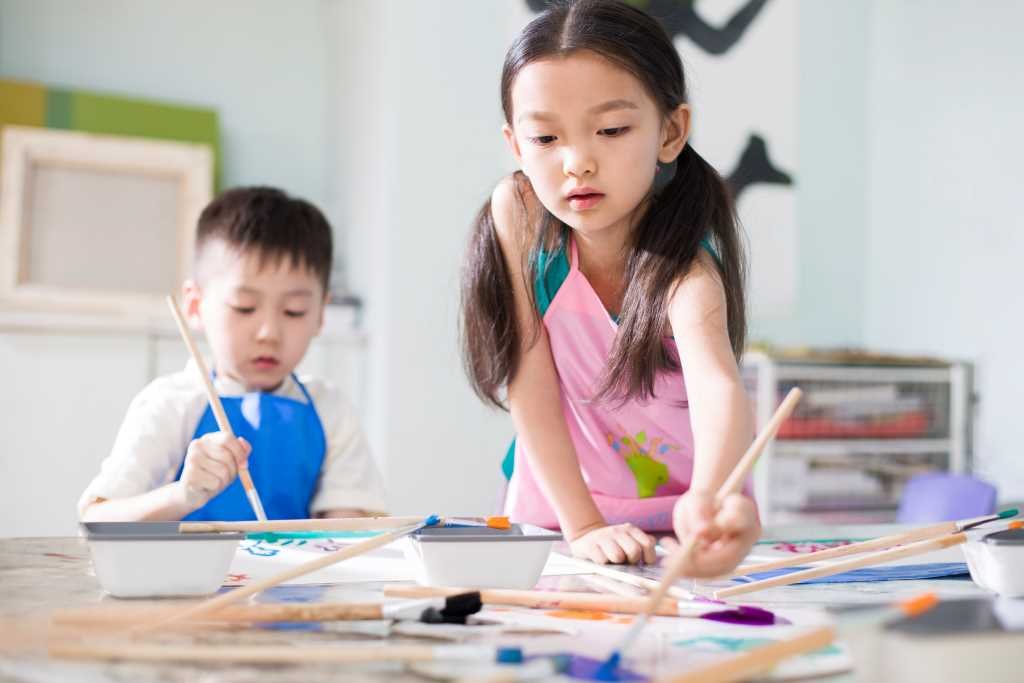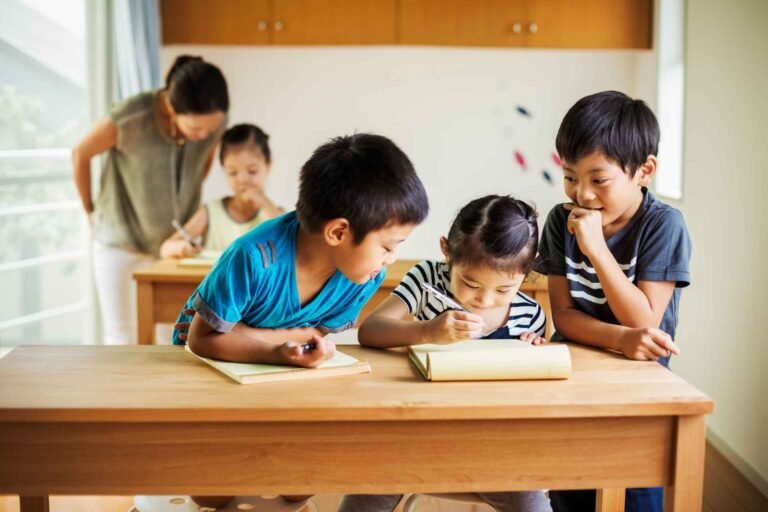Home » The Sycamore Center for Progressive Education Curriculum » Grade 2 Curriculum: First Sweep Through History
Grade 2 Curriculum: First Sweep Through History
Major Subjects: Bible, History, English, Filipino, Science, Math
Minor Subjects: Music and Art, Health, Physical Education, Technology and Livelihood Education


CORE SUBJECT
Bible 02
Learning Outcomes:
More specifically, learners are expected to exhibit cognitive, affective, and kinesthetic competencies as manifested in the following outcomes:
- Identify major persons, places, and events from the Bible in order to get to know their Christian faith through different biblical stories taught through various media
- Develop sense of self and identity in God by learning about His love for humanity as manifested in different stories in the Bible
- Apply values learned through different biblical stories in every day life through object lessons, discussions, and various activities
- Appreciate the importance of the biblical stories taught in class to develop strong foundations of their Christian faith
Student References / Workbooks
- The Jesus Story Book Bible
CORE SUBJECT
History and Geography 02
Introduction to World History 1
Learning Outcomes:
More specifically, learners are expected to exhibit cognitive, affective, and kinesthetic competencies as manifested in the following outcomes:
- Remember and highlight key historical figures and events from the past and present using timelines, news days, and discussions to underline their significance.
- Identify and map significant geographic regions like Europe, the Middle East, and Asia, connecting them to the historical events and cultures explored in the classroom.
- Explore how various societies form based on factors such as geography, population, culture, religion, values, and beliefs, using discussions and group activities to understand the impact of geography on human behavior and culture.
- Use craft materials to gain a deeper appreciation for the diverse architectures, tools, jewelry, and other cultural artifacts from various civilizations discussed in the course.
- Engage in role-playing and games to empathize with different cultures across various times and places, enhancing appreciation for diverse historical and cultural heritages.
- Encourage students to develop their own perspectives on the interconnectedness of different cultures and societies and how this influences their current lifestyles, through discussions, role-playing, and essay writing.
- Foster a greater appreciation for global diversity by comparing and contrasting various societies, focusing on aspects like people, culture, religion, values, and beliefs.
- Cultivate a sense of environmental and societal responsibility, integrating real-life applications and cross-disciplinary approaches.
Student References / Workbooks
- A Child’s History of the World, Virgil A Hillyer, 2014
- The Usborne Book of Peoples of the World, Roma Trundle, 1990
- The Usborne Book of World History, Anne Millard, and Patricia Vanags, 2008
- The Usborne Time Traveler, Judy Hindley, et al.,1998
LANGUAGE SUBJECT
English 02
Language Arts, Phonics, and Beginning Reading Comprehension
Learning Outcomes:
More specifically, learners are expected to exhibit cognitive, affective, and kinesthetic competencies as manifested in the following outcomes:
- Effortlessly and accurately read aloud level-appropriate narrative and informational text for fluency and comprehension through oral reading activities in the classroom.
- Continuously hone oral and written communication skills to critically and creatively respond to stories (both read-aloud and read independently) through discussions, written compositions, and art activities.
- Use reading skills and strategies to form conclusions and recreate new ideas through semantic mapping, brainstorming, discussions, written output and other creative output.
- Demonstrate understanding of grammatical conventions and structures by using language correctly and in context through exposure to correct language, direct instruction, writing activities and practice.
- Develop critical thinking skills while reading narrative and informational texts by applying reading comprehension strategies learned through modelling, direct instruction, practice, games, reading text, and other literacy-centered activities.
- Have genuine interest and appreciation for reading authentic text by showing enthusiasm and excitement during oral and written literacy activities.
- Empathize with various characters in narratives read by describing their successes and struggles through role play, written work, discussions, and other creative output.
Student References / Workbooks
- Frog and Toad All Year by Arnold Lobel
- Frog and Toad Are Friends by Arnold Lobel
- Frog and Toad Together by Arnold Lobel
- Days with Frog and Toad by Arnold Lobel
- Mouse Tales by Arnold Lobel
- Owl at Home by Arnold Lobel
- Steps to Functional Writing 2 by Virginia E. Antonio
LANGUAGE SUBJECT
Filipino 02
Pagbasa, Pagsulat at Wika 2
Learning Outcomes:
- Nakikita ang galing sa masusi at kritikal na pakikinig at pag-intindi sa narinig.
- Nakikita ang galing sa masusi at kritikal na pakikinig at pag-intindi sa mga binibigkas.
- Nauunawaan ang koneksyon sa pagitan ng mga simbolo at tunog.
- Nailalarawan ang kaalaman sa mga parte ng libro at kung paano nag-uugnay ang mga simbolo sa wika.
- Nagagampanan ang sari-saring kasanayan sa pagkilala at pagbasa ng mga salitang kilala at hindi kilala.
- Nagkakaroon ng pag-unlad sa kakayahan sa pag-unawa ng iba't ibang teksto.
- Naipapakita ang pagpapahalaga at kasanayan sa paggamit ng wika sa pakikipag-usap at pagbasa ng iba't ibang uri ng literatura.
Student References / Workbooks
Filipino: Isang Hamon 2
The Filipino Odyssey 2
STEM SUBJECT
Science 02
Introduction to Biology
Learning Outcomes:
Student References / Workbooks
- World of Animals. Usborne.
- Usborne Internet-linked Mysteries & Marvels of Nature. Usborne Publishing Ltd.
- First Encyclopedia of the Human Body (Usborne First Encyclopedia) (42774th ed.). Usborne Books.
STEM SUBJECT
Mathematics 02
Foundation of Mathematics 2
Learning Outcomes:
More specifically, learners are expected to exhibit cognitive, affective, and kinesthetic competencies as manifested in the following outcomes:
- Show a solid grasp of mathematical concepts such as numbers, number sense, geometry, patterns, algebra, measurement, basic statistics, and probability. Engage in both digital and hands-on learning methods like discussions, games, practical activities, and use of manipulatives.
- Utilize fundamental operations like addition, subtraction, multiplication, and division in solving numerical equations and word problems. Employ various tools including models, manipulatives, actions, visual aids, measuring instruments, and electronic devices.
- Compare whole numbers from 0-999 using descriptors like same, more, fewer, greater than, less than, equal to, greatest, and least.
- Illustrate multiplication and division concepts using diverse methods such as equal groups, repeated addition or subtraction, bar models, area models, arrays, etc.
- Measure and understand standard and non-standard units of length, mass, and capacity.
- Categorize, describe, and examine both two-dimensional and three-dimensional shapes, focusing on their properties.
- Develop data literacy by identifying, gathering, organizing, interpreting, and creating pictographs, bar graphs, and tally charts.
- Choose the correct mathematical operation for various problem-solving scenarios.
- Resolve mathematical issues involving the addition and subtraction of two to three-digit numbers, figures, patterns, measurements, and time calculations.
- Create projects or tangible demonstrations of mathematical principles and concepts, showcasing student comprehension and learning.
- Recognize and value the role of mathematics in various contexts such as social, economic, environmental, and cultural situations.
- Cultivate values like teamwork, cooperation, confidence, honesty, and sportsmanship, applying mathematical concepts in real-world scenarios.
Student References / Workbooks
- Math 7 A Teaching Textbook by Greg and Shawn Sabouri

